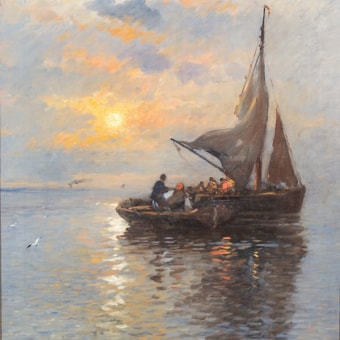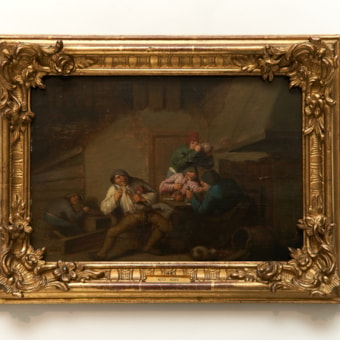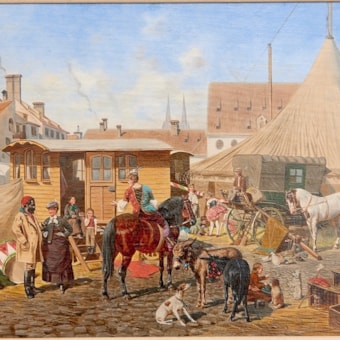Ref: 2681
View from Ziegelberg to Derneburg Castle
Ref: 2681
View from Ziegelberg to Derneburg Castle
1818
Oil on canvas
76.5 x 135.5 cm (30¹/₈ x 53³/₈ inches)
Germany
Signed and inscribed lower right; inscribed and dated on a label on the reverse: 1818
Oil on canvas
76.5 x 135.5 cm (30¹/₈ x 53³/₈ inches)
Germany
Signed and inscribed lower right; inscribed and dated on a label on the reverse: 1818
Provenance:
From the private collection of Countess Veronika zu Münster, England
Description: Oil on canvas, mounted on panel
Signed and inscribed lower right; inscribed and dated on a label verso: 1818
The history of Derneburg Castle stretches back almost a thousand years. Originally built as a fortified castle, it became a religious sanctuary in 1130. Over the centuries, it served various religious orders – Augustinians, Cistercians, and finally Lutheran communities – first as a nunnery, later as a monastery for men. After Napoleon's defeat in 1815, Derneburg Castle and its lands fell to the Kingdom of Hanover, which was under the rule of George III of England. He presented the estate to Ernst Friedrich Herbert, Count of Münster, in recognition of his services to the Crown at the Congress of Vienna.
As ministers under George III and George IV, the Münster family became increasingly Anglicized over the next 150 years, but retained ownership of Derneburg Castle from 1816 to 1974. In 1974, Count Peter zu Münster—husband of Countess Veronika zu Münster from 1955 to 1975—sold the palace to the painter Georg Baselitz. Since 2006, it has been the home of the Hall Art Foundation.
Signed and inscribed lower right; inscribed and dated on a label verso: 1818
The history of Derneburg Castle stretches back almost a thousand years. Originally built as a fortified castle, it became a religious sanctuary in 1130. Over the centuries, it served various religious orders – Augustinians, Cistercians, and finally Lutheran communities – first as a nunnery, later as a monastery for men. After Napoleon's defeat in 1815, Derneburg Castle and its lands fell to the Kingdom of Hanover, which was under the rule of George III of England. He presented the estate to Ernst Friedrich Herbert, Count of Münster, in recognition of his services to the Crown at the Congress of Vienna.
As ministers under George III and George IV, the Münster family became increasingly Anglicized over the next 150 years, but retained ownership of Derneburg Castle from 1816 to 1974. In 1974, Count Peter zu Münster—husband of Countess Veronika zu Münster from 1955 to 1975—sold the palace to the painter Georg Baselitz. Since 2006, it has been the home of the Hall Art Foundation.
you may also like







